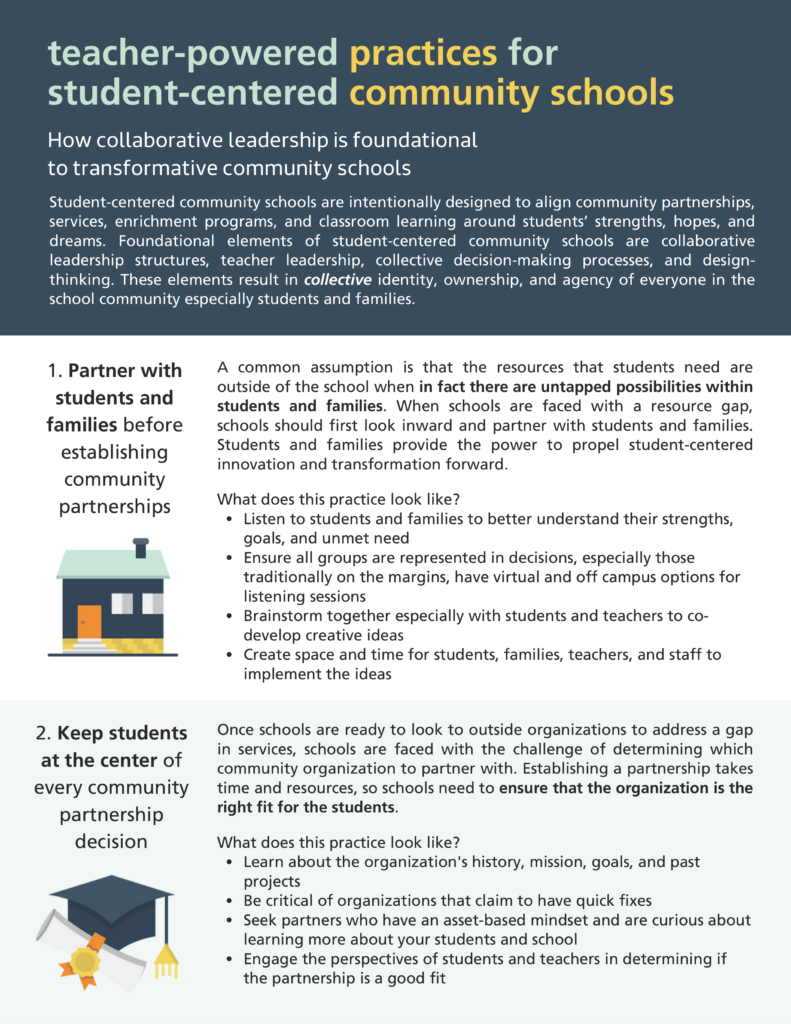
Student-centered community schools are intentionally designed to align community partnerships, services, enrichment programs, and classroom learning around students’ strengths, hopes, and dreams.
Foundational elements of student-centered community schools are collaborative leadership structures, teacher leadership, collective decision-making processes, and design-thinking. These elements result in collective identity, ownership, and agency of everyone in the school community especially students and families.
 NEWSLETTER SIGN-UP
NEWSLETTER SIGN-UP



